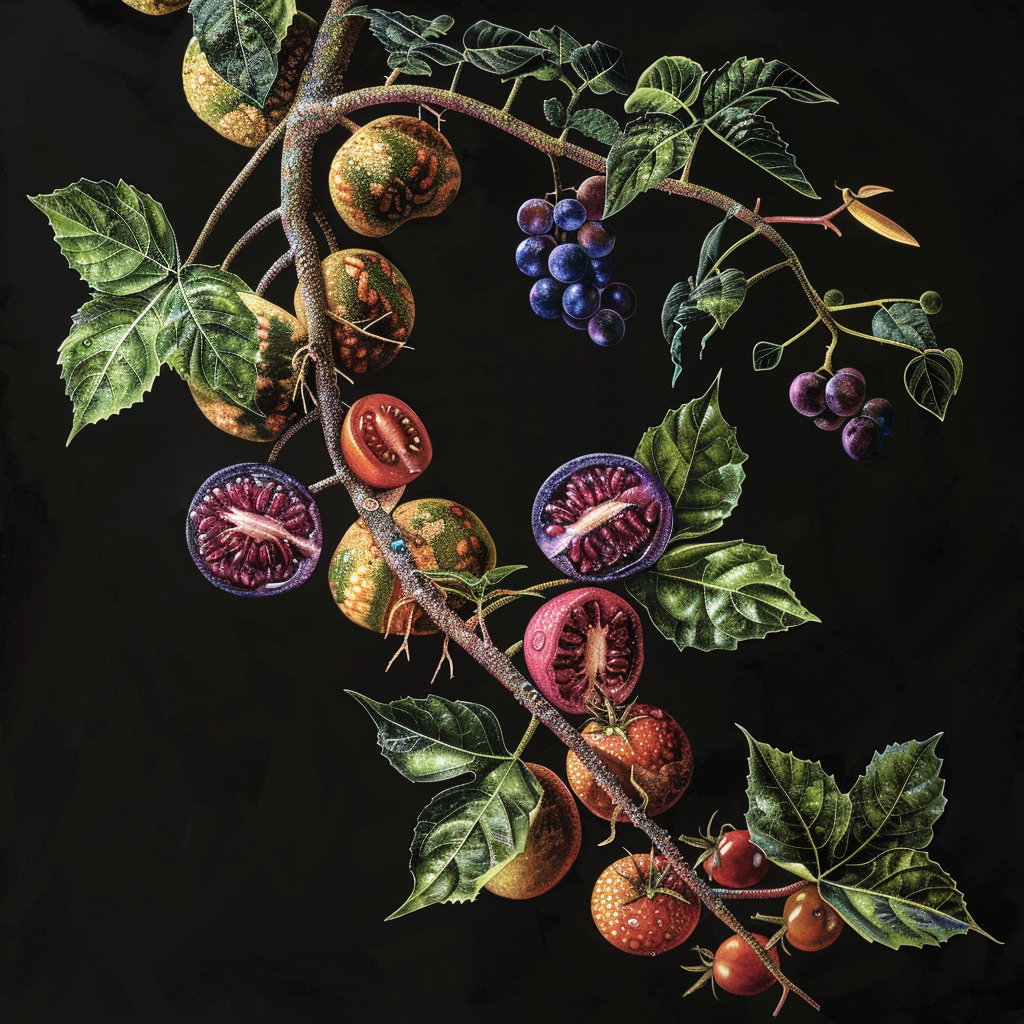
Mendelian genetics, named after Gregor Mendel, forms the basis of our understanding of heredity.
Mendel’s experiments with pea plants in the mid-19th century revealed inheritance patterns that changed how we think about genetics. Though initially ignored, Gregor Mendel’s principles are now the foundation of classical genetics. They help us understand genetic diseases, improve crops, and explore evolution.
Our online textbook covers the basics of Mendelian genetics, explaining its definitions, importance, and impact.
If you’re looking to improve your study habits, our blog on how to learn efficiently has some great tips. We also discuss the pros and cons of online learning and provide an honest look at homeschooling benefits and challenges. You can find all these and more in our learning tips section.
Essentials of Mendelian Genetics and Inheritance Laws
Are you short on time? Here are the must-know aspects of Gregor Mendel’s laws:
🟠 Mendelian genetics explains how traits are inherited based on Gregor Mendel’s principles.
🟠 Punnett Squares and pedigrees are tools to study and visualize genetic inheritance patterns.
🟠 Mendel’s laws of dominance, segregation, and independent assortment describe the behavior of alleles during inheritance.
Do you need help with Mendel’s inheritance laws? That’s okay! Personalized tutoring or interactive biology classes make these topics easier to understand. Explore more biology topics and expand your knowledge with our free Biology blogs.
What is Mendelian Genetics?
Mendelian genetics, named after Gregor Mendel, studies how traits are inherited through generations.
Definition of Mendelian Genetics
Mendelian genetics, or Mendelism, studies how genes are passed from parents to offspring based on Gregor Mendel’s experiments with pea plants. Mendel found that traits are determined by pairs of alleles with different gene versions. He introduced the idea of dominant and recessive alleles and formulated segregation laws and independent assortment. These laws describe how alleles separate during gamete formation and recombine at fertilization, determining the traits of the offspring.
Importance of Mendelian Genetics
Mendelian genetics is essential because it explains how traits are inherited. This knowledge is the foundation of classical genetics and has many applications. By studying Mendelian inheritance, scientists can predict genetic outcomes, understand genetic disorders, and improve breeding practices for plants and animals. Mendelian genetics also helps study human diseases and develop treatments, making it a crucial part of biology and medicine.
Learn how antibiotics fight bacterial infections and the issue of antibiotic resistance, plus how our immune system uses phagocytes and lymphocytes to protect us.
History of Mendelian Genetics
Mendelian genetics, also known as Mendelism, forms the foundation of classical genetics. Its history helps us appreciate how scientific ideas evolve and become integrated with other theories.
Gregor Mendel’s Experiments
Austrian monk Gregor Mendel conducted groundbreaking experiments on pea plants between 1856 and 1863. He meticulously cross-pollinated plants, observing how traits like flower color and seed shape were inherited. Mendel’s systematic approach and statistical analysis led him to formulate two fundamental principles: the Law of Segregation and the Law of Independent Assortment. Inheritance laws explain how traits are inherited from each parent and how alleles for each trait separate during the formation of gametes.
Rediscovery and Integration with Chromosome Theory
Mendel’s principles were initially ignored but rediscovered in 1900 by scientists like Hugo de Vries and Carl Correns. This rediscovery coincided with the chromosome theory of inheritance, proposed by Walter Sutton and Theodor Boveri, which suggested genes are located on chromosomes. Thomas Hunt Morgan’s work with fruit flies later integrated Mendel’s principles with chromosome theory, demonstrating that genes follow Mendelian inheritance patterns and are physically located on chromosomes.
Discover the role of cyanobacteria in producing oxygen and its ecosystem impact, and see how nutrient cycles like carbon and nitrogen cycles are essential for life.
Mendel’s Laws of Inheritance
Mendel’s inheritance laws explain how traits are passed from parents to offspring. These laws provide a framework for understanding genetic inheritance and predicting how traits will manifest in future generations.
Law of Dominance
The Law of Dominance states that in a pair of alleles, one is dominant, and the other is recessive. The dominant allele masks the expression of the recessive allele in a heterozygous individual. For example, in pea plants, the allele for purple flowers (P) dominates over the allele for white flowers (p). Therefore, plants with the genotype PP or Pp will have purple flowers, while only those with the genotype pp will have white flowers. The law of dominance helps explain why certain traits appear more frequently in a population.
Law of Segregation
The Law of Segregation explains that during the formation of gametes (eggs and sperm), the two alleles for a gene separate so that each gamete carries only one allele for each gene. This segregation occurs during meiosis, a type of cell division that reduces the chromosome number by half. As a result, offspring inherit one allele from each parent, restoring the pair of alleles in the zygote. Mendel observed this law through his monohybrid crosses, where he tracked the inheritance of a single trait, like seed shape. His experiments showed that the alleles segregate independently, ensuring genetic variation in the offspring.
Law of Independent Assortment
The Law of Independent Assortment states that genes for different traits assort independently during gamete formation. This means one trait’s inheritance does not influence another trait’s inheritance. Mendel discovered this principle through his dihybrid crosses, where he simultaneously examined the inheritance of two different traits, such as seed color and shape. He found that the genes for these traits were inherited independently, resulting in a 9:3:3:1 phenotypic ratio in the F2 generation. The law of independent assortment is fundamental in understanding how genetic diversity arises through combining different alleles during sexual reproduction.
Get the scoop on how producers, consumers, and decomposers work together in the food chain and check out different symbiotic relationships such as mutualism, commensalism, and parasitism.
Tools for Studying Inheritance
Understanding inheritance patterns and predicting genetic outcomes require specific tools. Two of the most commonly used tools in genetics are Punnett Squares and Pedigrees.
Punnett Squares
Punnett Squares, created by geneticist Reginald Punnett, are diagrams used to predict offspring genotypes from a particular cross. They show all possible combinations of parental alleles and their potential offspring. Each square in the grid represents a possible genotype of an offspring, making it easy to visualize the probability of inheriting specific traits.
For instance, if both parents are heterozygous for a trait (Aa), the Punnett Square will show a 25% chance of the offspring being homozygous dominant (AA), a 50% chance of being heterozygous (Aa), and a 25% chance of being homozygous recessive (aa). Punnett squares are essential for studying Mendelian inheritance patterns and predicting genetic outcomes.
Pedigrees
Pedigrees are charts that depict the inheritance of a trait through several generations of a family. They help geneticists and researchers trace the inheritance patterns of specific alleles and identify carriers of genetic disorders. Pedigrees use standardized symbols: squares represent males, circles represent females, and shading indicates individuals who express the trait.
By analyzing pedigrees, you can determine whether a trait is autosomal or sex-linked, dominant or recessive. Pedigrees are particularly useful in medical genetics for understanding the transmission of hereditary diseases and planning for genetic counseling.
See how microplastics harm marine life and potentially impact our health, and discover how epigenetics can influence our genes and traits.
Molecular Basis of Mendel’s Laws
The study of meiosis and chromosome behavior confirmed Mendel’s laws at the molecular level. DNA, the molecule that carries genetic information, is organized into chromosomes. During meiosis, chromosomes separate to match Mendel’s observations about how traits are inherited. This process explains why offspring inherit a mix of traits from their parents.
Modern genetic techniques, like DNA sequencing, allow scientists to study genes directly, providing detailed insights into how traits are passed down and how genetic disorders occur. These advancements have important medical applications, such as genetic testing and developing targeted treatments. The molecular basis of genetics helps us grasp the complexity of heredity and its impact on health and disease.
Learn how autotrophs and heterotrophs contribute to ecosystems, about different types of toxins, and how they affect our bodies.
Non-Mendelian Inheritance
While Mendelian inheritance provides a foundation for understanding genetics, not all traits follow Mendel’s straightforward rules. Non-Mendelian inheritance includes several patterns that explain the complexity of genetic traits.
Examples of Non-Mendelian Inheritance
Non-Mendelian inheritance includes incomplete dominance, codominance, polygenic traits, and linked genes.
Incomplete dominance occurs when the heterozygous phenotype is a blend of the two homozygous phenotypes—for example, crossing a red flower with a white flower results in pink flowers.
Codominance occurs when both alleles in a heterozygote are fully expressed, such as in the AB blood type, which has both A and B antigens present.
Polygenic traits are controlled by multiple genes, resulting in continuous variation, like skin color and height.
Linked genes, located close together on the same chromosome, tend to be inherited together, which can affect how traits are passed on.
Significance of Non-Mendelian Inheritance
Non-Mendelian inheritance helps us understand traits that don’t fit simple dominant-recessive patterns. It shows how multiple genes can influence traits, resulting in a range of physical characteristics.
For example, skin color and height are influenced by several genes, leading to the variety we see in people. Knowing these patterns helps study how certain genetic conditions are inherited and managed. It also aids in explaining exceptions to Mendel’s laws, offering a complete picture of how inheritance works.
This knowledge is valuable in fields like medicine, agriculture, and genetics, where understanding complex inheritance can lead to better treatments, crops, and genetic research.
Dive into the world of plankton to learn about phytoplankton and zooplankton and explore the fascinating world of protozoa, those tiny single-celled organisms.
Tips for Learning Mendelian Genetics
Mendelian genetics, based on Gregor Mendel’s work, explains how traits are inherited through dominant and recessive alleles. Mendel’s laws of dominance, segregation, and independent assortment are vital to understanding heredity. Tools like Punnett squares and pedigrees help predict genetic outcomes. Non-Mendelian inheritance patterns, like incomplete dominance and polygenic traits, show that genetics is more complex than Mendel’s findings alone.
Tutors and tutoring sessions can be very helpful for better understanding. Private teachers can provide personalized lessons and classes to deepen your knowledge of Mendelian genetics.
If you’re looking for a biology tutor, try searching for “biology tutor Liverpool” or “biology teacher London” on a platform like meet’n’learn. This can help you find the perfect private teacher for your needs.
If you prefer learning in a group, search for “biology classes Leeds” or “biology lessons Birmingham” online. You’ll find options at community colleges or educational workshops.
FAQs on Gregor Mendel and Mendel’s Laws of Inheritance
1. What is Mendelian genetics?
Mendelian genetics refers to the principles of inheritance discovered by Gregor Mendel through his experiments with pea plants.
2. Who was Gregor Mendel?
Gregor Mendel was a 19th-century monk who discovered the fundamental laws of genetic inheritance.
3. What are Mendel’s laws of inheritance?
Mendel’s laws of inheritance include the law of dominance, the law of segregation, and the law of independent assortment.
4. How does the law of dominance work?
The law of dominance states that in a pair of alleles, the dominant allele masks the effect of the recessive allele.
5. What is the significance of Punnett squares in Mendelian genetics?
Punnett squares are tools to predict the probability of offspring inheriting particular traits from their parents.
6. How do pedigrees help in studying inheritance?
Pedigrees track how alleles pass from one generation to the next, revealing patterns of inheritance in families.
7. What are examples of non-Mendelian inheritance?
Non-Mendelian inheritance includes incomplete dominance, codominance, polygenic traits, and linked genes.
8. How does modern science confirm Mendel’s laws?
Modern science confirms Mendel’s laws by studying meiosis and chromosome behavior, providing molecular evidence for genetic inheritance.
References:
1. Libre Texts Biology
2. Nature
3. Wikipedia



